How To Rank Up Your Local Business?
Are customers finding your local company?
You’re not the only one who doesn’t receive a lot of Traffic from Google.
This is an extremely prevalent issue.
A common question I get asked while providing consultations to local businesses is how to improve their Google ranking.
Given that the majority of consumers utilize internet searches to identify local companies, it’s crucial to ask this question.

There are a ton of visits (all potential clients) that you are missing out on if you are difficult to find with a quick Google search.
Furthermore, optimizing your website and crossing your fingers is insufficient. You might not Receive any traffic if you are on page three.
It is obvious that a lot of people click on the first result, but after that, the numbers drastically decline.

A lot of people just read the first page.
Though you want to be on page one at all costs, your site should ideally rank at position one on page one.
You have to rank like a pro in order to do that.
The majority of local company owners I’ve spoken with are afraid that their Google Rankings will suffer.
People frequently believe that in order to get on page one, you need to have millions of fans and a sizable social media following.
When I tell them that it’s actually fairly easy to rank on Google’s first page, they become startled.
Naturally, it doesn’t happen instantly, but it also doesn’t have to take years.
I’m going to give you five of my best page-one ranking strategies. Every single one of these tactics has helped me rank quickly, and they have never failed me.
1. Take the keywords of your rivals.
It’s likely that the majority of your traffic will originate from searches using particular kinds of keywords.
Not just any old keywords, mind you. I refer to keywords that are specific to your location and niche.
Stealing the keywords of your rivals is one of my favorite keyword strategies.
It is simple to identify the keywords that a rival ranking on page one is using, so you may use those same keywords to your advantage.
Not only will you save hours upon hours of laborious keyword research, but you’ll also have early access to competitor activity.
The first step is to go to SpyFu.com and type the URL of a rival website into the text field. (In this case, Copyblogger.com will be used.)

Press the Enter key or select the small magnifying glass icon located on the box’s right side. This is how the results page will appear once you get there:

You’ll find a section labeled “Top Keywords” as you scroll down.
This displays the top organic keywords for which the website ranks on the left side. The top paid AdWords keywords that they bid on are displayed on the right.

You may search for each keyword on Google and see the organic rankings for yourself.
With this information, there are numerous things you can accomplish.
Writing an incredibly detailed blog post (or other piece of content) is one of my tried-and-true methods.
The plan is to use one or two of your rivals’ keywords as the foundation for your article.
Although it seems easy, there is a lot involved.
It is necessary for you to produce outstanding content, which necessitates devoting time to its creation, research, and refinement.
But don’t be alarmed. My personal favorite type of content is a blog post, which I’ll discuss later in this piece.
These keywords can also be used to generate new search terms for your website.
Go to your AdWords account and use the Keyword Planner tool to accomplish this.
To access this location, select Tools > Keyword Planner.
Click “Search for new keywords using a phrase, website, or category” after you’ve arrived.

Next, enter the keywords of your rivals (which you obtained from SpyFu) and press the bottom blue “Get Ideas” button.

Under the “Keyword Ideas” tab, the Keyword Planner will provide you with relevant keywords.

These could be terms that haven’t occurred to your rivals. After that, you may use those keywords to your advantage by ranking for them so that people find you rather than your rivals.
2. Join the local group.
When conducting a Google search, consumers often look in a few different areas.
One of those locations is the first result (page one, position one).
However, there’s some extremely valuable Google real estate that can drive a ton of clicks. And you can get your company included here if you play your cards well.
I am referring to something known as the local pack.
Even if you are not familiar with the name, I can assure you that you have seen it before.
It’s the block that appears when you search for businesses beneath the map. This is how it appears:

The local pack only has three slots available, so it appears to be very competitive and challenging to get one for yourself.
Fortunately, it can be rather simple.
Establishing your Google My Business account should be your first priority.
Go to https://www.google.com/business/ and select one of the green “Start Now” buttons to get it set up.

Complete the form completely in order to register your business.

Secondly, NAP finds it significant.
I’m not saying you should sleep more, though you should.
Name, location, and phone number are what it stands for.

It is important that your NAP remain consistent wherever it is posted. For Google, you’ll need your official business name and contact details.
On the crucial pages of your website, such as the home page, about page, services page, etc., you can (and should) incorporate your NAP.
This is where it usually goes in the footer area.

Don’t overlook the importance of effectively using your NAP when marketing your local business.
Additionally, it makes it more likely for you to join the local pack.
It’s acceptable if you don’t show up in the local pack; Google My Business generally helps with local SEO. You have a significant advantage just by setting it up.
3. Ensure that your website is responsive.
I write about mobile in several of my articles.
It’s because more people use mobile devices than desktop computers to search the internet.

The reason for this is that Google launched a mobile-first index.
For you, what does that mean? In essence, Google indexes websites according to how mobile-friendly they are.
You will lose out if your competitor’s website is mobile-friendly and yours isn’t, since they will rank higher.
If that’s not enough of an incentive to make your website mobile-friendly, keep in mind that a non-mobile-friendly website will see a high bounce rate since most of its visitors will depart.

Being mobile-friendly is really crucial.
You must comprehend the meaning of mobile friendliness if you want your website to be genuinely responsive to mobile devices.
Being mobile-friendly does not imply avoiding interstitials or creating a separate mobile website (such as m.facebook.com).
It means focusing your entire user experience on mobile users.
There are a few crucial components of mobile friendliness that should not be overlooked.
Although I’ll cover them in brief below, I strongly advise you to read up on each subject further.
Responsive design should be used on your website first.
If your website is responsively designed, it will adjust to various screen sizes.

Even though the site may look slightly different on a mobile device, desktop users will experience the same website in a comparable way thanks to responsive design.
You can satisfy users on desktop and mobile devices with responsive design.
This is not the same as setting up a separate mobile website for your company. Users using desktop and mobile devices can visit the same website thanks to responsive design.
Your website should ideally be so responsive that it adjusts to fit different screen widths.

Screen sizes vary widely, and your website needs to work on as many of them as possible.
In fact, Google has stated rather openly that it favors responsive design.

Second, make use of keywords designed for mobile.
The search phrases used by desktop and mobile users are frequently different.
The majority of your audience is being ignored if you’re solely concentrating on desktop keywords.
You must instead invest some time in researching mobile keywords.
Keywords for desktop computers and mobile devices differ significantly.
For instance, mobile keywords are typically shorter and include location-specific terms like “near me.”
Users of mobile devices also have various goals. Usually, people visit or give businesses a call soon after conducting a search.

It won’t benefit you to focus just on desktop keywords. If anything, you ought to pay a little more attention to mobile keywords.
3. Focus on SEO for mobile devices.
You really should look at mobile SEO because it’s a different species altogether.
Mobile SEO is made up of a number of components, and it can be a little perplexing.
I advise you to use a mobile SEO analyzer to test your website. It saves you the effort and informs you of your areas for improvement.
Google has a handy tool that checks if your website is responsive for mobile devices.
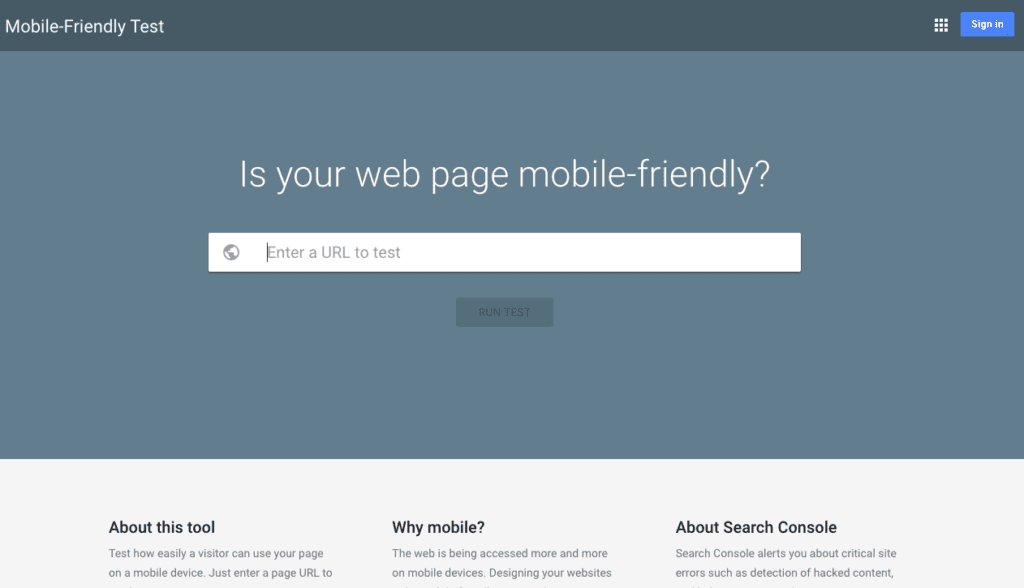
After entering your URL and selecting “Run Test,” the tool will evaluate how mobile-friendly your page actually is.
However, Varvy’s mobile SEO analyzer is more comprehensive, therefore I advise using that in addition to this tool.
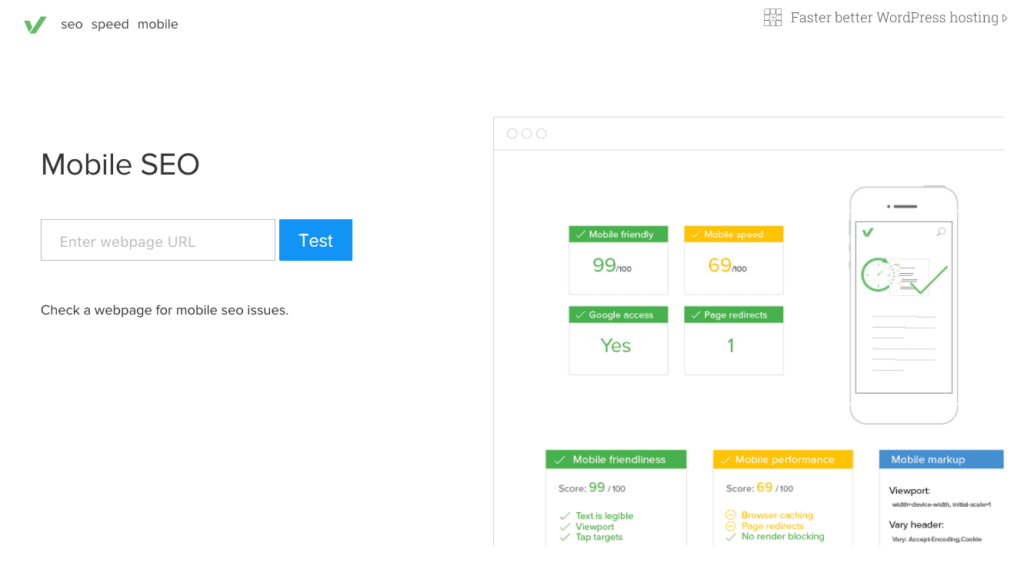
It provides you with a more thorough analysis of how mobile-friendly your website is.
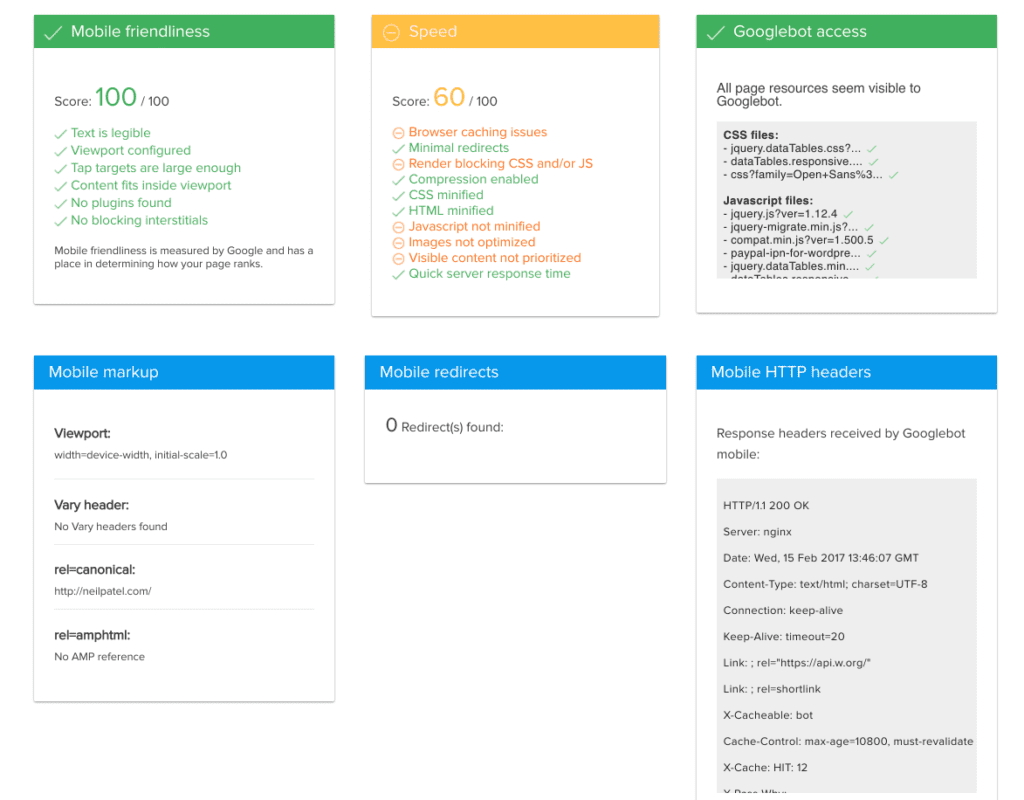
In summary, there are three key elements that contribute to your website being genuinely mobile friendly:
1. Make use of responsive design
2. Look up and place mobile-related keywords.
3. Boost your mobile search engine ranking.
In general, mobile friendliness is now required. Any website has to have it.
Additionally, it contributes significantly to your position in the SERPs as a ranking indication.
What are you waiting for if you haven’t made your website mobile friendly yet?
4. Including your location Organically in your URL
You’ll adore this tip if you’re currently developing your website. (If you’ve already constructed your website, I’ll explain how to use it.)
I conducted a large-scale experiment on Google’s local results a while back with my team.
We discovered several intriguing findings that improved our comprehension of Google’s local page ranking.
A significant discovery concerned the URL.
We found that Google favors domain names with location names in the URL for local searches.
Thus, when someone searches for tourist attractions in San Diego, Google will give preference to domains that have San Diego in the URL (such as sandiegocountytourism.com).
This is limited to the local level. It is impossible for someone searching for tourist sites in Stockholm to find anything about San Diego.
This holds true if a website’s URL contains a portion of the name of a city. Cleveland, for instance, is abbreviated on Clevescene.com.
For this reason, a lot of small businesses use their city name, or a portion of it, in their URL.

Think about changing your URL if it doesn’t contain your location. Investing in a domain name can potentially improve your ranking for a small fee.
You can also use a 301 redirect to guide visitors to your new website while maintaining use of your old domain name.
5. Compose excellent long-form content.
I promised to discuss how to produce an excellent blog post earlier in this piece, and I’m keeping my word.
I love content and make it on a daily basis, so it’s difficult for me to keep quiet about it.
I’ve found great success with long-form writing. The majority of individuals concur that long-form content should be at least 1,000–1,500 words, while there is no set word count.
Me? I tend to have too much information on the side. I usually advise producing content that is three thousand words or more.
It receives more shares, links, and traffic.
Check it out for yourself. Longer content attracts more users:
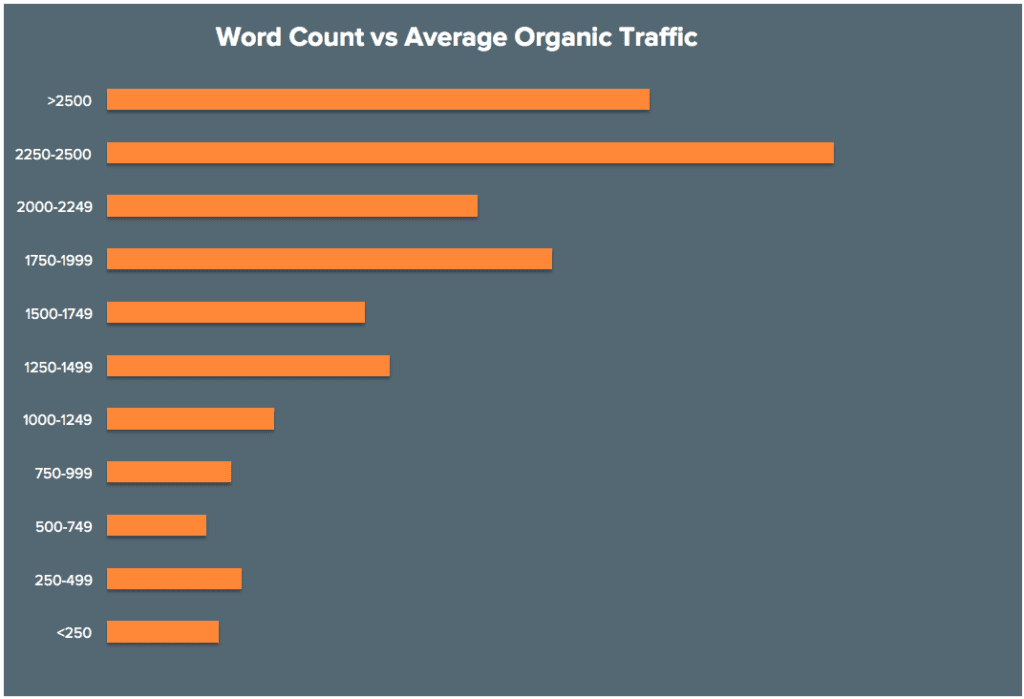
Additional links:

And further shares:

Our analysis of widely shared content has yielded data indicating that high-quality content generally possesses three attributes:
- It delves deeply into the subject.
- It provides a thorough coverage of the subject. (This content isn’t superficial or generic!)
- It is targeted at the keyword that you want to rank for.
Long-form content has all three of these qualities, which is what Google prefers. They were meant to be together.
As you can see from the chart below, long-form content frequently appears in the top results for any given search phrase.

Millions of people search for content that is lengthy and in-depth. Your chances of landing one of those highly sought-after slots on page one will increase if you produce any.
Perhaps you’re thinking, “I only own a small company. How in the world could I write a blog?”
As long as you have something insightful to share, you may write a blog post about nearly anything in your area. Even if your niche is uninteresting, you can still create long-form writing about anything.
Furthermore, you are not need to be a skilled copywriter. All you have to do is take some time to learn about the foundations of quality content.
In summary
It’s simple to get sucked into the local business syndrome trap.
Well, that term was mine, but it describes what I’ve observed in nearly every local company I’ve dealt with.
The majority of them believe that because they are, well, local, they cannot appeal to a large audience.
They believe that being a local company prevents them from obtaining good search engine optimization and driving traffic to their website.
And that is not even close to the reality.
Local firms are actually doing very well in many aspects.
Large brands must employ alternative strategies because they are obviously unable to use local SEO.
However, local companies can utilize off-page and on-page SEO in addition to local SEO.
To put it another way, it’s not as hard as you might imagine to appear on Google’s first page.
The rewards will be well worth the time it takes to make the necessary adjustments to your website.
Imagine having your result appear on page one, followed by a sharp increase in your metrics.
That is definitely feasible. Even though someone has already told you so, it’s not a pipe dream.
And there are other advantages than heavy traffic. A page one ranking benefits your branding as well.
You want to establish yourself as the local authority, don’t you? If you own a barbershop, you want locals to associate your name with the word “barbershop.”
These days, Google is the source of such associations. People go there to find anything and everything.
You don’t need to spend a lot of money on marketing or have a fancy design. For you to start attracting new clients, those are not necessary.

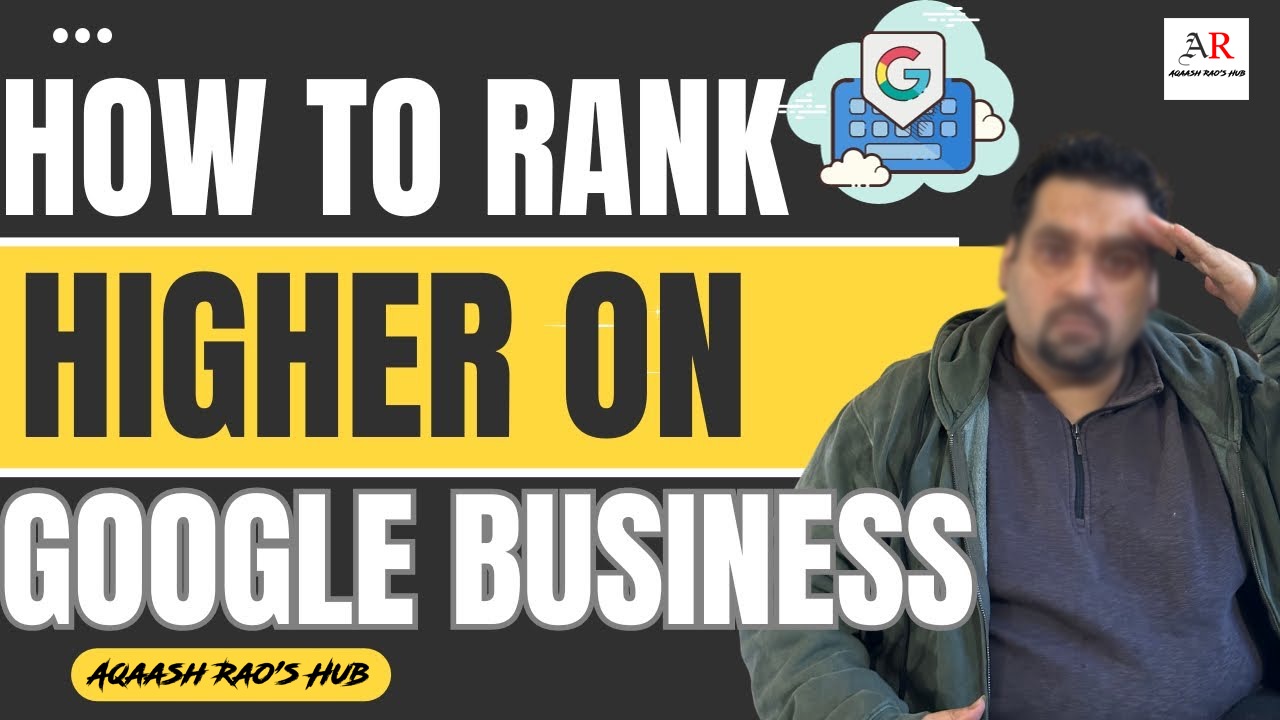
2 thoughts on “Rank Up Your Local Business: Best of 5 Ways To Achieve”